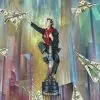GARDENING ON BORROWED TIME
21 SEPTEMBER – 20 OCTOBER 2023
STUDIO WEST
Unit 1, 216 Kensington Park Road
London
W11 1NR
STUDIO WEST is proud to present ‘Gardening on Borrowed Time’ a multidisciplinary group exhibition inspired by Derek Jarman’s Garden at Prospect Cottage. Almost 30 years after the legendary artist, activist and filmmaker’s untimely death from AIDS-related illness, the exhibition celebrates an aspect of the eternal legacy of a trailblazing talent taken too soon: a vivacious garden cultivated against all odds in the harsh desert-land of Romney Marsh in Dungeness, Kent.
Apocalyptic and seemingly unwelcoming, Romney Marsh is dominated by a momentous 1950s nuclear power station that towers ominously over the barren landscape. Miles-long stretches of scarcely populated shingle stands between the whirring man-made structure and the roaring waves of the English Channel. Perched unassumingly between the two is an ink black fishing hut with canary yellow windows, Derek Jarman’s beloved Prospect Cottage. Surrounding the humble homestead, is the most magnificent and unlikely of sites: a garden bursting with life where bees dance, poppies sing and wild sea kale shimmers silver in the sunlight.
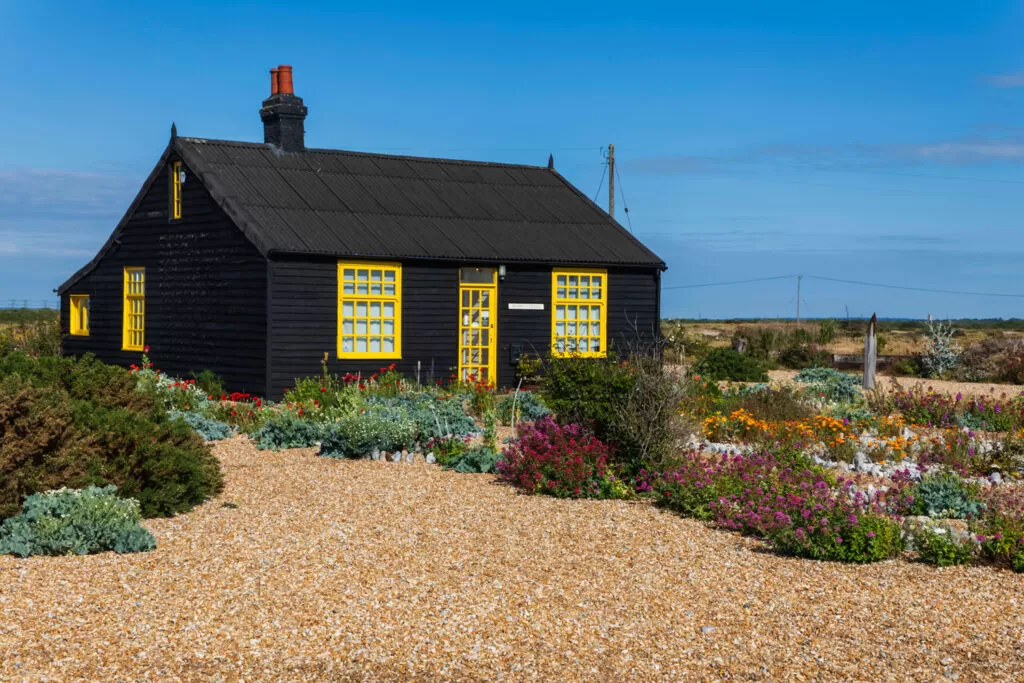
For Jarman, this garden was the realisation of a lifelong dream. Throughout his childhood, he sought solace in nature and cultivated an almost encyclopaedic horticultural knowledge, having been gifted the 1926 illustrated manual, ‘Beautiful Flowers and How to Grow Them’ for his fourth birthday. Amidst the gale-force winds and salty sea mist, few could have created such a unique spectacle.
A garden unlike any other, sprouting up out of the barren landscape like a mirage and populated by extraordinary sculptures – enigmatic stone circles, driftwood totems and talismanic strings of pebbles dangling from rusting iron posts – and elegantly placed flotsam and jetsam. Railway sleepers, a long-forgotten wooden boat and the metal balls of fishing floats all mingle jovially amongst the shaggy tufts of iridescent wild sea kale, blooming red valerian, bright yellow poppies, towering fox gloves and bushy santolina.
The garden, much like many of Jarman’s films, was cajoled into existence through trickery and artifice: large quantities of compost were buried beneath the shingle surface to give the plants a chance. Brought to life as unexpectedly as a magician pulling a rabbit from a hat, it has now outlived its creator. Diagnosed with HIV in 1986, the year before he purchased Prospect Cottage, Jarman tended his garden in the face of death. In his 1993 book on colour, ‘Chroma’ he wrote, “I built my garden with the colours of healing”, and indeed it sustained him through seven years of illness. As he nursed his garden to life in an inhospitable terrain, he too was nourished by the newly sprouted and brightly blooming foxgloves, periwinkle, poppies and purple iris.
Titled ‘Gardening on Borrowed Time’, after a note scribbled next to a planting plan in one of Jarman’s sketchbooks, this exhibition responds to the complex symbolism that has subsumed his rugged, rural paradise in the years following his death; a site of queer pilgrimage, a beacon of hope, a living memorial, a place for healing and a metaphor for unwavering resilience in a world that had turned its back.
Each artist featured in the exhibition has visited Prospect Cottage, retracing Jarman’s
footsteps across the crunching shingle. They have also immersed themselves in his diverse oeuvre: reading his lyrical journals, watching his ground-breaking films and poring over Howard Sooley’s photographs of the garden as it grew. The profound personal connections they have found with his interminable legacy have directly inspired their works for ‘Gardening on Borrowed Time’
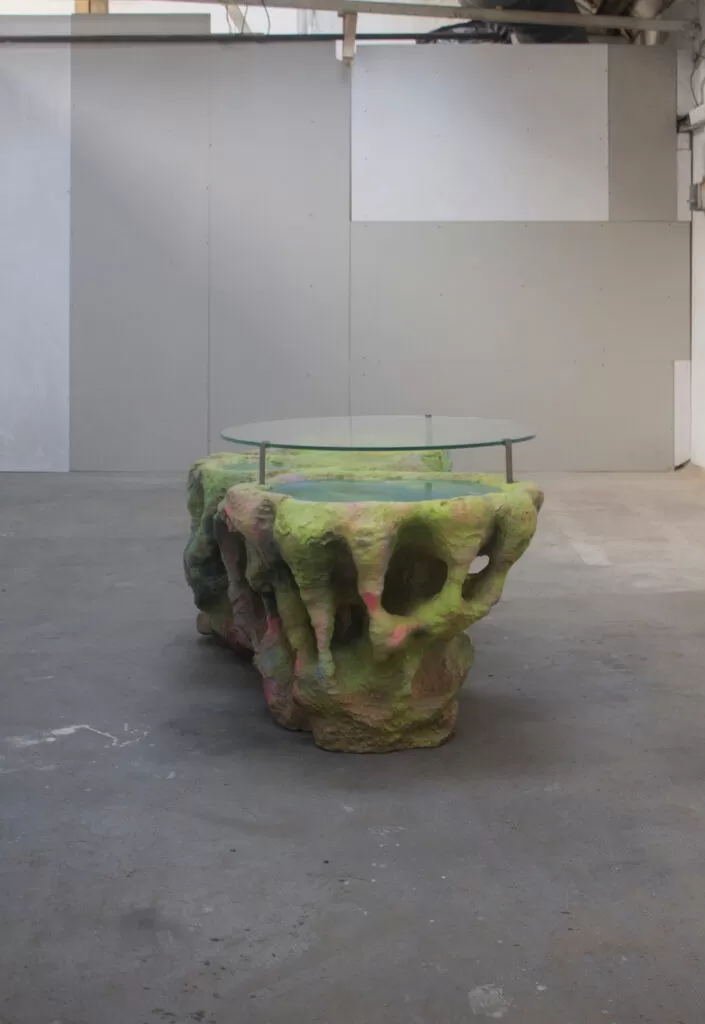
Image Courtesy of the Artist and STU
In the case of Camilla Bliss, Charlie Boothright and Xaoichi Dong, the garden has planted itself firmly in their imaginations. A noteworthy young sculptor, Bliss has created futuristic, almost floral forms that speak to the idiosyncratic, dystopic and otherworldly qualities of Romney Marsh. Responding to a quote from ‘Modern Nature’, “I brewed my nuclear tea”, she sees these works as “flowers at the edge of the world”. They echo the uncanny strangeness of witnessing Jarman’s sacred garden blooming beneath the mammoth monstrousness of the power station.
For Boothright, an abstract painter, the visceral textures of the unlikely paradise have inspired a series of rugged crimson works on paper forming a large-scale collaged canvas. Intense and immense, her expressive painting speaks to her elemental emotional response to the landscape. Her discovery of Jarman’s 1993 film ‘Blue’, created towards the end of his life as his eyesight declined, prompted the inclusion of her electrifying cobalt drawings. Xaochi Dong meanwhile, a long-time lover of gardens, found quiet reprieve and restoration at Prospect Cottage. He has produced muted and elusive paintings, using volcanic clay as pigment, inspired by a moment of serenity amongst the stone circles – in his own words, “I experienced a gentle wind that felt like a delicate brush caressing the landscape, leaving behind its mark in the most enchanting way”.
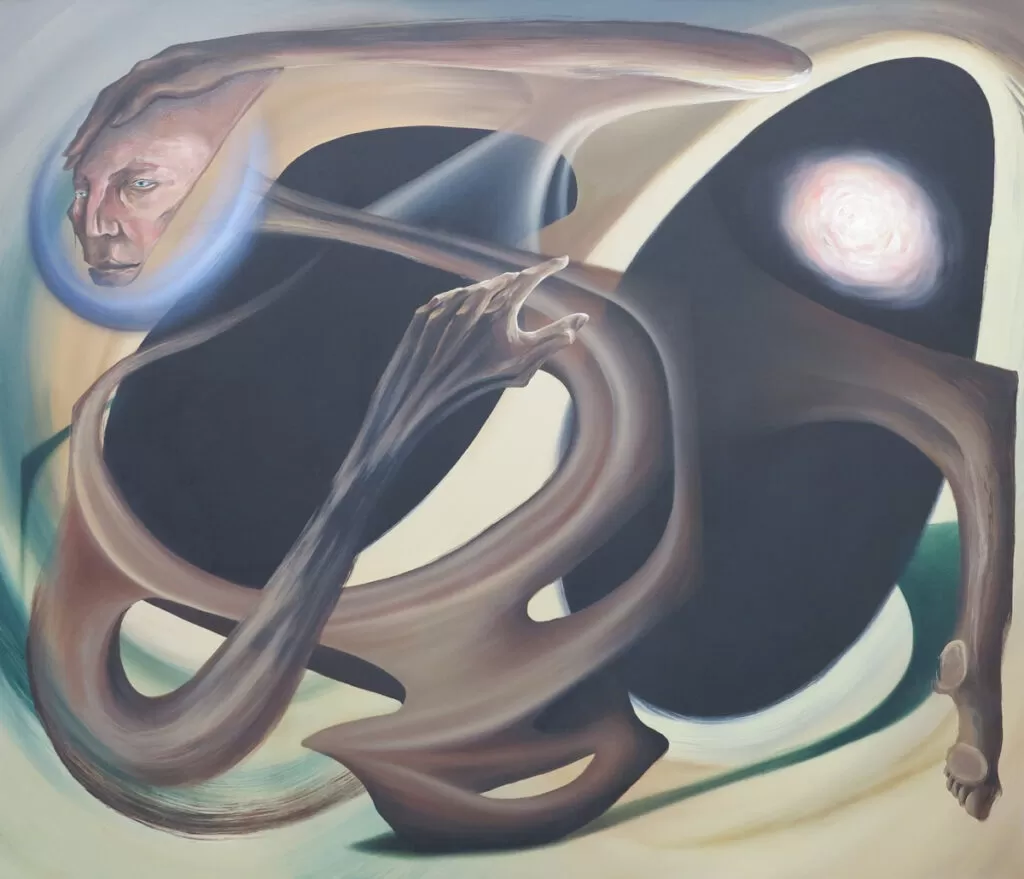
Image Courtesy of the Artist and STUDIO WEST
Both painter Alfie Rouy and sculptor Nic Sanderson have been entranced by the magic
and mystery that permeates Jarman’s coastal refuge. There is an intrinsic connection
between Jarman and Rouy, both equally fuelled by a ceaseless desire to create from deep within and an interest in the esoteric. Through automatic drawings and cryptic paintings, Rouy attempts to materialise “the flow of versatile, fluid-like energies, frequencies and vibrations that intertwine the mind with the Earth’s current phase of existence”.
Taking the peculiar sculptural forms balanced precariously upon the shingle as his starting point, Rouy’s painting reflects the singular wonder of Jarman’s creative vision. As Jarman’s health declined and in the face of dwindling hope, he became fascinated with paganism; he began to explore the pagan notion that apertures in naturally occurring objects offer a view into the afterlife. Many of his sculptures feature holes, the starting point for Nic Sanderson’s works which foreground the experience of looking through to the other-side, while tackling themes of grief, loss and memory.
For filmmaker and photographer Billy Sassi, Jarman’s experimental Super 8mm films were a natural starting point. Sassi drew specific inspiration from “their colourful nature; sense of immediacy; layering of images; and gesturing figures” when choreographing his film for the exhibition. Layering a projected silent film, featuring a lone figure trying on and posing with an oversized Pulcinella mask, onto photographic images of the same, Sassi explores notions of image veracity, theatricality and the requests images and spectators make of one another.
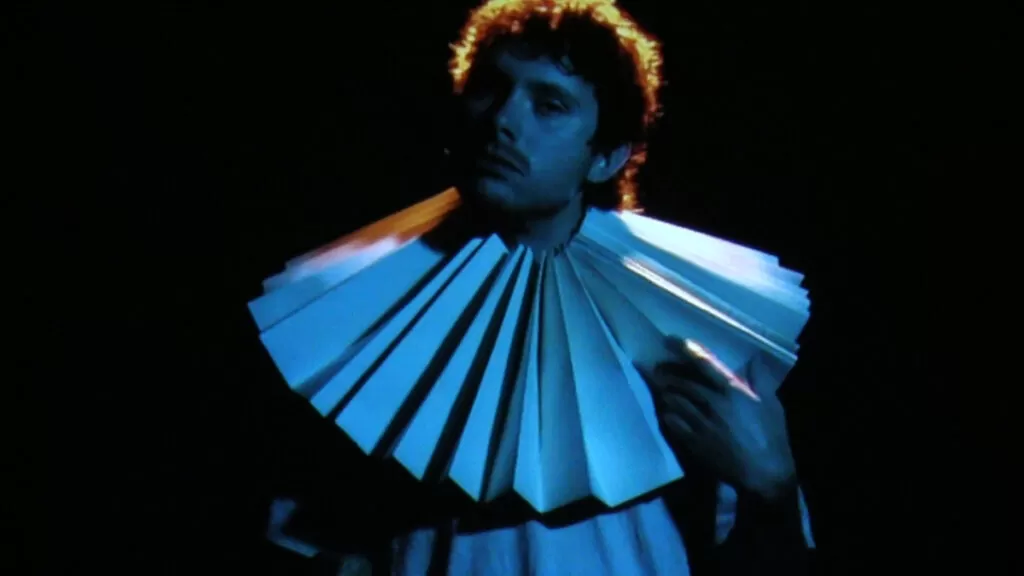
Image Courtesy of the Artist and STUDIO WEST
For him, the piece “explores contact with the imaged body, and the invented and real tensions that emerge from presence and stillness”. Like Jarman, Sassi’s process is intuitive, he creates complex sets, props and costumes through hand-made processes that foreground the immediacy of the creator’s hand. Mirroring the surreal qualities of Jarman’s 1991 film ‘The Garden’, Sassi foregoes narrative structure, instead placing the viewer deep within a phantasmagorical land of make-believe.
In an interview broadcast on BBC 2’s film programme ‘Moving Pictures’, aired in the Autumn of 1990, Derek Jarman said “the garden is an anchor…it’s about anchoring myself somewhere”. Many years after his passing, this reads like a prophecy; the garden he left behind has eternally tethered a part of him to our world.
This enchanted and indescribable remnant forms the basis of STUDIO WEST’s exhibition, ‘Gardening on Borrowed Time’. Featuring predominant new works by six young London-based artists, complimented by a living installation and lyrical quotes from Jarman’s evocative writings, the exhibition is a holistic ode to the garden at Prospect Cottage – the sacred bequeathment of an era-defining creative talent.
©2023 STUDIO WEST



